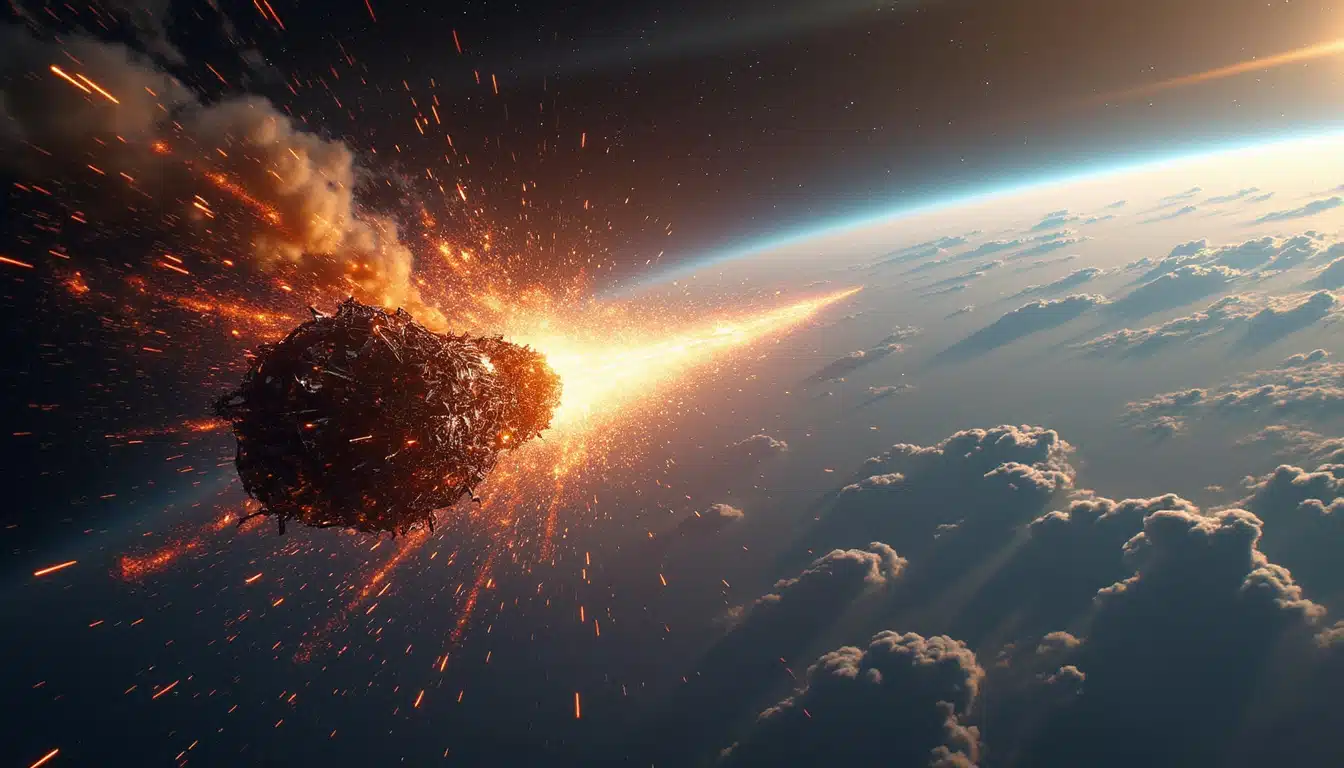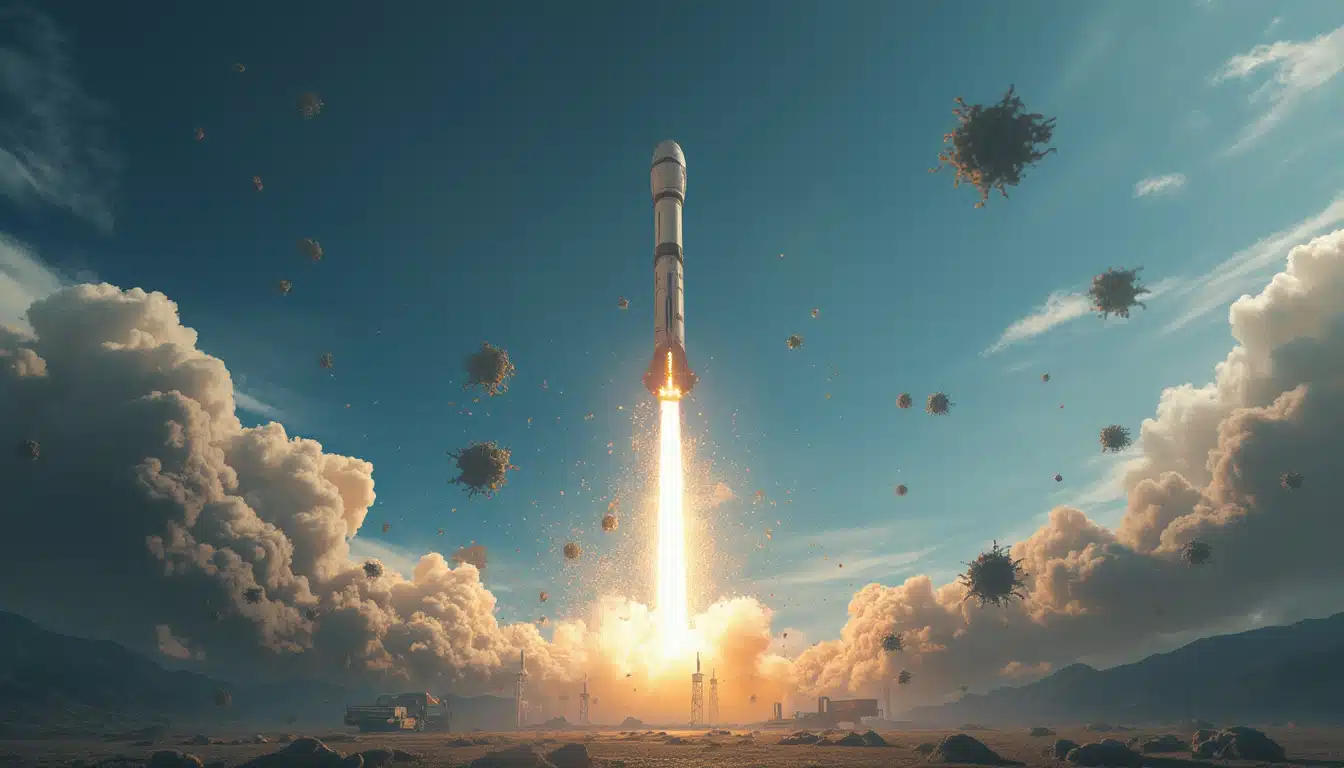The recent incident involving SpaceX rocket debris has captured the attention of space enthusiasts and the media alike, especially following its surprising landing on a Polish man’s front yard. This phenomenon, which unfolded with dramatic visuals and overwhelming surprise, raises questions about the safety of re-entering urban space debris and the broader implications for aerospace operations.
As we delve into the details surrounding this specific event, we will explore how rocket debris interacts with Earth’s atmosphere, unravel the narratives involving the affected individuals, and consider the ongoing developments in space news. The realities of spaceflight are astonishing, yet they persistently remind us of the risks involved, demonstrating the complex dance between technological advancement and environmental safety.
Understanding Rocket Debris and Its Risks
When spacecraft, including those operated by Elon Musk’s SpaceX, return to the Earth’s atmosphere, they often discharge remnants, known as rocket debris. This phenomenon occurs for various reasons, often involving discarded stages of rockets and spacecraft that burn up during re-entry.

The Descent of SpaceX Rocket Debris
The trajectory of the falling rocket debris is influenced by multiple factors: atmospheric density, velocity, and angle of entry. Once a rocket’s operational phase concludes, any remaining parts that are unshielded can create hazardous situations as they plummet toward the ground. The unfortunate incident in Poland saw a Polish man unknowingly become the anchor point of such a striking reminder of our technological advancements.
Reports indicate that the debris created a fleeting spectacle in the sky, capturing the attention of many before finally crashing down to the earth in the small town of Poland. This event serves to accentuate the increasing frequency of aerospace incidents—a worry not only for scientists and engineers but also for everyday civilians.
The Polish Incident: Details and Reactions
The Polish man, who had just stepped outside his house, witnessed a fireball cascading through the sky, followed by a powerful thud that echoed through his neighborhood. Upon investigation, the debris was identified as a remnant of a SpaceX launch, triggering reactions from local authorities and space agencies alike.
Emergency services quickly responded, assessing the situation to ensure no one was injured and to facilitate the safe removal of the debris. This incident highlighted the thin line between groundbreaking advancements in space exploration undertaken by companies like SpaceX and the unintended consequences such endeavors can have on the public.
Public Awareness and Safety Measures
In the wake of the incident, discussions around public safety became paramount. Authorities emphasized the importance of monitoring satellite fall and debris, educating the public about what to do in such scenarios. The challenge remains in balancing innovative pursuits in space travel while ensuring that safety protocols safeguard people on the ground.
The alarming reality of falling space debris pushes world leaders and scientists to contemplate stricter regulations and tracking systems for future missions, ultimately ensuring enhanced safety measures for both the atmosphere and urban populations.
The Environmental Impact of Space Travel

As the quest for exploring the cosmos accelerates, understanding the environmental repercussions becomes increasingly important. SpaceX and other aerospace companies must grapple not only with the thrill of exploration but also with the environmental fallout that follows these launches. The incident in Poland is just a small fragment of a much larger conversation about how aerospace activities contribute to atmospheric pollution and the risks posed by urban space debris.
Awareness and Responsibility in Space Exploration
The environmental impact of rocket launches extends beyond the mere presence of debris. Increased launch frequency, often associated with satellite deployments, generates significant Nasa news regarding emissions and atmospheric pollution. Launches contribute to a delicate balance that can have lasting implications on Earth’s climate, and consequently, both private entities and governmental organizations are considering how to mitigate those effects.
One perspective focuses on developing eco-friendly propulsion systems, while another emphasizes the regulation of orbital debris. These efforts highlight a growing awareness of responsibility that must accompany aspirations for space travel. The need for robust frameworks, similar to those regarding terrestrial pollution, has become apparent as humanity ventures into the unknown.
The Future of Space Debris Management
With the frequency of launches set to increase, effective management of rocket debris must be prioritized. The incident in Poland is a wake-up call urging space organizations to reevaluate their operations. Understanding collision risks, improving tracking technologies, and developing systems for debris removal are pressing needs within this evolving field.
Innovative Solutions to Space Debris Challenges
Advancements in technology offer promising solutions to managing urban space debris. Projects focused on “cleaning up” orbital debris are gaining traction, with new methodologies being developed to remove remnants from past launches. Through collaboration between private companies and international agencies, comprehensive approaches can be established to confront this urgent issue.
International forums have begun exploring shared accountability measures for managing new satellite constellations, reinforcing the interconnectedness of space activities globally. Progress hinges on understanding that the cosmos is a shared resource, necessitating cooperation in safeguarding its future.
| Type of Debris | Description | Actions Taken |
|---|---|---|
| Rocket Stages | Reusable or discarded rocket components from launches | Implementing new re-entry protocols to minimize risks |
| Satellite Fragments | Remnants from defunct satellites | Tracking technology advancements |
| Particle Debris | Microscopic fragments generated by collisions | Research into mitigation strategies |
Space exploration stands at the nexus of incredible potential and notable responsibility. The haunting image of rocket debris landing unexpectedly in a Polish man’s lawn encapsulates the instantaneous impact of such technological advances. As we tread further into an era characterized by new heights of discovery and innovation, collectively addressing the implications of our endeavors must remain at the forefront of our thoughts and actions.




Leave a Reply